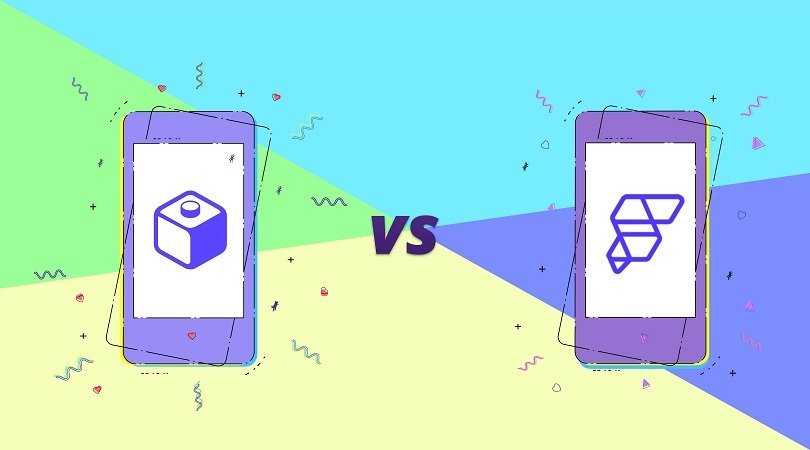Draftbit vs FlutterFlow: Best No-Code App Builder Compared 2025?

The world is evolving at a much faster pace. With the constant innovation of new-age technologies and digital transformation, businesses have been revolutionizing their strategies to attract new customers, increase their conversion rate, and generate higher ROI.
Cutting-edge digital technologies, such as AI and machine learning, have become a part of the modern world because these tools make your life easier. There are plenty of other software technologies that will make web and app development a breeze.
Unlike traditional software development, where a lot of coding and programming languages are required, people can now leverage the benefits of advanced tools to know the power of no-code app development.
This means you can create beautiful and visually appealing mobile and web applications without using complicated coding.
Two key players in the field are Draftbit and Flutterflow. These have been gaining a lot of attention for being super easy, user-friendly, and having great capabilities.
In today’s article, we will do a brief comparison between Draftbit and Flutterflow and help you choose the right platform for a no-code app development project.
Let’s Get Started!
What is No-Code App Development?
No-code application development platforms are crafted to democratize the app development process by letting non-technical users develop apps through intuitive drag-and-drop interfaces without using a single line of code.
This is one of the fastest-growing trends these days- all thanks to its flexibility, easy interface, and less dependency on developers.
Both platforms have allowed designers, entrepreneurs, and small-scale businesses to create interactive applications to promote their products, services, and brand image.
If you want to know which one is better for no-code development, delve more and make a well-informed decision.
What is Draftbit and why is it the Best Tool?
Draftbit is a no-code platform that allows users to develop native mobile applications without using complicated coding. The interface of Draftbit comes with a visual design canvas that lets you arrange components and define different interactions to make the app development a breeze.
The key feature of this platform is its powerful library of pre-built components. The best part is that you can customize these components without any coding skills. It also allows users to save both time and elbow grease by leveraging the benefits of pre-designed elements.
Key Highlights of Draftbit:
- Intuitive Visual Design: This platform comes with a drag-and-drop interface that lets users visually design their mobile apps, enabling them to see how the app looks in real-time.
- A Huge Library of Components: With an extensive library of components, you can access customized components and assemble screens in no time. You can also select pre-made elements to enhance the look and functionality of your app.
- No Coding Development: Draftbit offers logic-building features where you don’t need to write a single line of code. This includes building conditional actions and dynamic data integration.
- Access Collaboration: This app development platform enables you to access collaborative app development tools, letting your teams work together in real-time to develop interactive applications.
Flutterflow: Navigating the Possibilities
Flutterflow, on the other hand, is also a popular tool that helps you create interactive and robust applications without using heavy coding. The smooth integration with Google’s Flutter framework allows you to develop visually appealing, responsive, and cross-browser platform web and mobile applications.
The integration with Flutter makes it easy for you to customize the app, add high-quality animations, and convert complex app ideas into a visual appearance.
Key Highlights of Flutterflow:
- Super-Easy Flutter Integration: This platform allows you to harness the features of the Flutter framework. It enables users to develop beautiful and intuitive mobile and web apps.
- Responsive App Design: Flutterflow focuses on responsive design, enabling applications to look and function effortlessly across different devices and screen sizes.
- Highly Customized Animations: The tool provides great and impressive animation tools, allowing users to develop robust, engaging, and dynamic user experiences without any coding.
- Database Connectivity: It comes with integrations and popular databases that help users fetch and showcase dynamic data in their apps.
FlutterFlow vs Draftbit: Which App Builder Should You Choose?
- Ease of Use
Both Draftbit and Flutterflow have the potential to provide user-friendly interfaces. This means both platform allows people to create visually appealing apps without writing a single line of code.
Draftbit comes with an extensive library of components that simplifies the process of collecting screens, while Flutterflow’s design features give more customization flexibility
- Design Flexibility
The best part of Flutterflow is that it is integrated with Flutter and thus offers great flexibility when it comes to creating designs and complex animations.
On the other hand, Draftbit pays attention to pre-built components, which may limit design versatility to some extent.
- Scalability
Flutterflow’s Flutter integration makes it an ideal option to manage complicated and scalable applications.
Draftbit is designed for simpler app ideas that do not require constant and complicated customizations.
- Customization vs. Speed
While Flutterflow offers a ton of customization options, Draftbit’s pre-designed components and logic-building features enable people to develop functional apps in a breeze. The choice between the two depends on the trade-off between customization and speed.
- Learning Curve
Draftbit’s easy-to-use interface makes it more approachable for amateurs, requiring less time to get on board.
Flutterflow’s integration with Flutter might require you to invest more time in learning, but it opens the door to more professional and customized applications.
Conclusion
There is no denying that the future of no-code development is one of the most promising revolutions in the app development sector. Draftbit and Flutterflow are two great platforms that help you create flexible, scalable, and robust applications without any coding. You can pick any one of them as per your requirements and coding skills to kick-start your app development journey.





